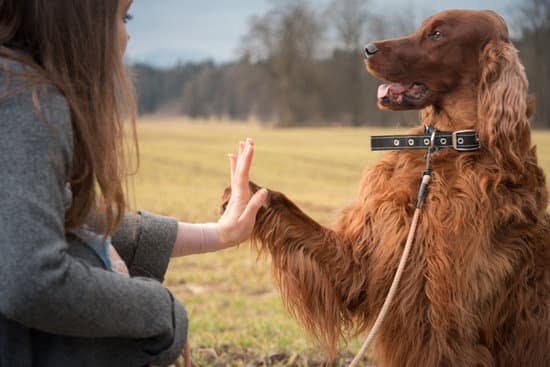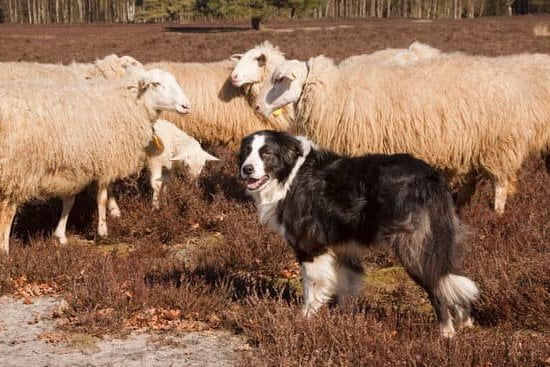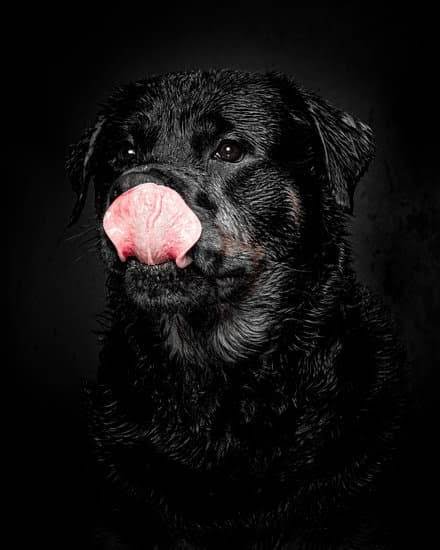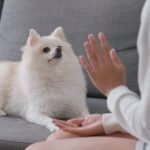Introduction
Dog nose training is a training approach used to help your dog use their nose more effectively. The purpose of teaching the skill of smell is to encourage the canine to look for items using their sense of smell, as opposed to simply relying on sight. This kind of training creates and reinforces behaviors like searching, tracking, alerting, and even medical detection with cancer-sniffing potential.
The benefits of dog nose training include increased accuracy when locating certain items and improved communication between pet owners and their dogs. It also provides mental stimulation that increases cognitive abilities in canines. Applying this type of training can help your pup respond better to commands such as “sit” or “lay down” as it encourages them to think independently rather than predict what you want from them every time.
Applications for this type of training include search and rescue missions, detection activities with law enforcement officers, aiding in therapy settings, drug detection, finding lost items such as keys or wallets and much more. Dog nose training can also allow people with injuries to have a canine aid help them around the home and outside by locating keys or picking up dropped items that have been scented beforehand.
Types of Nose Training
Nose training has become an increasingly popular activity for dog owners to help their pet with obedience and reinforcement. As with any form of training, how you approach nose work will depend on the type of dog you have. The most traditional methods for nose training involve utilizing objects that require the dog’s sense of smell—such as treats, toys, or scent pads—to encourage the desired response. Other approaches may include seeking and finding exercises where dogs must follow a trail of scents using their natural tracking abilities. Additionally, activities such as hide ‘n’ seek are great ways to make your pup’s nose work fun while they look for toys and treats that have been hidden away. Whatever your method of choice, always remember to reward your pooch when they’ve successfully completed a task; this will promote positive reinforcement and establish a strong bond between you and your canine companion!
Supplies You Need for Nose Training
Dog nose training can be a fun and rewarding way to teach your dog how to follow their own scent. It’s important to know what supplies you will need before getting started. Here are some of the items you should have on hand for nose training your canine companion:
High-value treats: You will need high-value treats for rewarding your pup when they complete tasks correctly, so make sure to keep tasty snacks in stock.
Snuffle mat: This tool is designed to give your pooch an engaging way to use their sense of smell without having to do any extra work. Place a few treats inside and let them sniff out the goodies that are hidden within!
Kongs or food puzzles: Using these tools, you can ensure that your pup is on purpose while they use their nose. Insert treats into these toys and watch as they solve the puzzle in order to receive their reward, all while strengthening their olfactory skills.
MerlinsCrate toys: MerlinsCrate offers a variety of treat-dispensing toys specifically designed for dogs who love using their noses! These brainteaser qualities provide a fun challenge and reward system – perfect for teaching your pup proper nose behavior.
Scenting wipes: Scenting wipes can help add an extra layer of practice by allowing you to change the scent for different activities or puzzles that require a bit more complexity from your pup. Simply choose from one of our many aroma categories available, swipe it onto a toy or area that needs practice, and watch as your pooch puts his sensitive sniffer to work!
Step-by-Step Guide to Nose Training for Different Age Groups
1. Before beginning any nose training, it’s essential to make sure the dog is comfortable and happy with the situation. Formulate a plan for how to approach the training, but be sure to be flexible when your pup does not respond like expected – as these are learning opportunities, not punishments.
2. For puppies that are five weeks old or younger – Start with basic scent activities that target the puppy’s curiosity and involve food rewards or play activities. Start off simple and gradually adjust to more difficult tasks such as recognition games, tracking scents and hiding objects under boxes they must locate through their noses.
3. For dogs between seven and ten weeks old – Utilize repetition teaching techniques during nose work sessions as this will increase memory retention in addition to boosting muscle memory functions in the nose area of the brain. Use pieces of food or treats with unique aromas such as fish oil, nutmeg, garlic or cinnamon to stir the pup’s curiosity even further and challenge them on a mental level.
4. Finally for adult dogs – introduce complex games which involve finding hidden objects within specific areas without losing sight of them more than two seconds at a time. This teaches your pup to stay focused as well as keeping their smile wide open by stimulating them through multiple layers of interaction similar to object sorting puzzles found at pet stores nowadays!
Factors Affecting Nose Training Outcome
There are a variety of factors that affect the outcome of dog nose training. The individual characteristics and personality traits of a pet can have a major influence on how successful the training will be. Dogs with inquisitive and clever personalities often take to nose training quickly and effectively, while those with more passive personalities may struggle. In addition, any environmental changes or distractions can significantly impact the success of nose training. If there are other animals or people around when the training is taking place, this could affect the focus of a pet and make it more difficult to train successfully. Finally, the reinforcement method used during the course of nose training is very important in determining results. Positive reinforcement such as treats and praise can be an effective tool in encouraging dogs to take part in nose training activities and ensure successful outcomes.
Additional Advantages of Nose Training for Dogs
Nose training not only provides a fun and interactive activity for your dog, it also has numerous benefits for their behavior overall. Nose work can help to address any problem behaviors that your pup might be displaying such as digging, barking, or even jumping up on visitors. It teaches them problem-solving skills, along with teaching them to focus on one task for a period of time.
Another great benefit of nose training is that it can give your pup an outlet when they feel anxious or overstimulated. By challenging their sense of smell, you are providing a mental exercise which can serve as an alternative behavior rather than destructive ones resulting from boredom and restlessness. The activity also helps with coordination and boosts confidence in otherwise shy dogs by providing positive reinforcement when they complete the activity successfully. Finally, nose work will strengthen the bond between you and your pup as they learn to listen and obey your commands while properly completing their task.
Common Pitfalls to Avoid While Nose Training
There are some common mistakes people make when they attempt to nose train their dog. One of the most common mistakes is going too fast with training. It’s important to take your time and introduce each step in a gradual manner. If you move too quickly, the dog might become overwhelmed and give up on the training.
Another pitfall to avoid is expecting too much progress in one session. While it’s normal for dogs to learn quickly, don’t expect the process to be quick or easy. Take the training slow and break it down into many small sessions.
It’s likewise easy for owners to get frustrated during nose training if their pooch doesn’t follow directions or complies slowly or inconsistently with commands. It’s important to remember that dogs learn best when corrections are gentle and consistent. Additionally, praising and rewarding your pup whenever they demonstrate improvement should be part of everyday nose training practice.
Finally, make sure you have all of the necessary materials before beginning a session and set realistic goals for each one so that it doesn’t become overwhelming for either of you. Make sure there is minimal noise in your environment since loud noises may distract your pup from their learning process. Allowing ample training time will ensure that both you and your four-legged friend receive maximum benefit form the nose training experience!
Summary and Conclusion
Dog nose training is an important part of building a strong bond between you and your pup. It helps build their confidence, mental stimulation, and trust. Dogs learn best with positive reinforcement and reward-based methods of training, such as treats and toys. Before beginning nose training sessions, it’s important to make sure your dog is comfortable with interacting with objects. Start by teaching your pup the names of different objects or shapes; when they’ve mastered this beginners’ step, move on to using their nose to identify the items. By rewarding correct responses generously during these lessons, dogs can master the activity quickly.
The key takeaways from dog nose training are that positive reinforcement and rewards should be used to properly motivate your pup while they learn new commands or activities. The basic skills of obedience such as coming when called, sitting/staying, and responding to verbal cues should be taught first before introducing more complex activities including identifying objects through scent. Patience and consistency are essential for successful dog nose training; if it becomes too difficult or challenging for your pup then try breaking bigger tasks into smaller chunks so the overall process is more attainable for both you and your pup! Lastly, don’t forget to reward success frequently – even just a few verbal praises come a long way!

Welcome to the blog! I am a professional dog trainer and have been working with dogs for many years. In this blog, I will be discussing various topics related to dog training, including tips, tricks, and advice. I hope you find this information helpful and informative. Thanks for reading!





